Research Article: Journal of Drug and Alcohol Research (2023) Volume 12, Issue 9
A Study on Safe Use of Drugs in Older Adults Attending a Tertiary Care Hospital Using BEER's and STOPP Criteria
Rachamsetty Kavya1*, Srikanth Kumar Karumanchi2, Manchikalapati Bhargavi1, Boyina Revathi1, Marri Jalaiah1, Rayini Venkata Sai Mounica1 and D. Dhachinamoorthi12DKSS Institute of Pharmaceutical Science and Research for Girls, Maharashtra, India
Rachamsetty Kavya, QIS College of Pharmacy, Andhra Pradesh, India, Email: kavyal123@gmail.com
Received: 02-Oct-2023, Manuscript No. JDAR-23-116252; Editor assigned: 04-Oct-2023, Pre QC No. JDAR-23-116252 (PQ); Reviewed: 18-Oct-2023, QC No. JDAR-23-116252; Revised: 23-Oct-2023, Manuscript No. JDAR-23-116252 (R); Published: 30-Oct-2023, DOI: 10.4303/JDAR/236263
Abstract
Chronic diseases and polypharmacy are common in the elder ageing population as they use many drugs for various health conditions. BEER’s 2015 and STOPP’s criteria were used to assess older individuals reasonable pharmaceutical use in a tertiary care institution. At Sri Ramachandra Hospital, Chennai conducted a 6-month prospective observational studyon 188 patients 65 and older admitted to the Inpatient General Medicine Ward. Demographics, medical history, diagnosis, and prescriptions were documented. Beers and STOPP criteria assessed medications. The study population had a mean age of 68.7 years ± 4.7 years, with a majority aged 65-69. 37.2% had diabetes. Beers criterion identified 18% of Potentially Inappropriate Pharmaceuticals (PIMs) and STOPP criteria 9.6%. Beers criteria revealed PIM use in the sample population: Amitriptyline (3.1%), levetiracetam (1.1%), chlorpheniramine (8%), trihexyphenidyl (0.5%), alprazolam (1.6%), chlordiazepoxide (1.6%), clonazepam (1.6%), and diazepam (1.1%). Diltiazem, glimepiride, alprazolam, chlordiazepam, clonazepam, losartan, aspirin, and clobazam were found by STOPP criteria. Healthcare practitioners should be trained in geriatric pharmacology and use Beers and STOPP criteria in geriatric prescribing. These tools should support clinical discretion rather than replace it.
Keywords
Inappropriate prescription; Polypharmacy; Geriatric population; Potentially inappropriate medication
Introduction
The UN estimates that by 2050, the world population of 65-year-olds will be more than twice that of children under 5 and even exceed that of 15 to 24-year-olds [1]. In 2010, 17.4% of Europeans were over 65; by 2060, 29.5% people over 65 are expected to rise [2]. 140 million individuals over 60 live in India, the world’s 2nd-largest elderly population. They use many drugs for various health conditions. Noncommunicable diseases include cardiovascular disease, cancer, respiratory disorders, diabetes, and mental health issues increase this population’s health concerns. Vision and hearing difficulties also increase with ageing chronic illnesses, impairments, and dependence are more common in the elderly [3,4]. Pharmacokinetics and pharmacodynamics are altered in older persons due to physiological changes [5]. Biological processes that alter mitochondrial and nuclear DNA cause organ and body function decline with age [6]. Numerous drugs’ pharmacokinetics and pharmacodynamics are affected [7]. Drug misuse, resistance, and side effects are concerns as chronic diseases and medication use among the elderly rise [8,9]. Inappropriate prescription (IP) in older individuals increases mortality and wastes healthcare resources [10]. Potentially Inappropriate medication (PIM) includes over, mis, and improper prescribing of medications [11]. Retrospective studies on PIM prescription rates employ the BEER’s Criteria [12]. Inappropriate prescribing can lead to adverse drug events, readmissions, death, medication non-adherence, falls, and greater healthcare expenses [13]. Due to its reliability and reproducibility, the Beers Criteria is a popular international reference [14]. A systematic assessment and grading of drug-related issues and adverse drug events in older persons revised the 2012 AGS Beers Criteria [15]. The STOPP criteria, a pharmaceutical evaluation tool, identify senior drugs with more hazards than benefits [16].
This study uses BEER’s 2015 and STOPP criteria to evaluate older persons’ reasonable drug usage in tertiary care hospital general medicine wards. Examine the incidence of possibly inappropriate drugs in elderly patients admitted to general medicine wards, determine their clinical importance, and provide relevant interventions.
Methodology
The 188 male and female patients over 65 who were admitted to the inpatient general medicine ward at Sri Ramachandra Hospital in Chennai for 6 months participated in this prospective observational study. Patients gave their informed consent after the Ethics Committee approved the trial. In the data collection form, demographic information, prior medical history, clinical diagnosis, and prescribed medication were all noted. The prescription medications were categorised in accordance with the criteria’s listed categories. Their prescriptions were evaluated for appropriateness using the Beers and STOPP criteria [17,18] after the available data was processed. MS Excel 2010 programme was used to statistically examine the acquired data. For categorical variables, descriptive statistics, frequency analysis, and percentage analysis were employed to characterise the data; for continuous variables, the mean and Standard Deviation (SD) were utilised.
Results
Gender wise age distribution of the population
A prospective observational study examined 188 senior patients, 116 (62%) males and 72 (38%) females, with a mean age of 68.7 years ± 4.7 years. Table 1 and Figure 1 show the study population’s gender-based age distribution. 130 (69.1%) patients were 65 years-69 years old, 31(16.4%) were 70-74, 17 (9.04%) were 75-79, 5 (2.65%) were 80-84, and 5 (2.65%) were 85 or older.
Table 1: Gender wise distribution of study population
| Age in years | Total number of patients (N=188) | Total | |||
|---|---|---|---|---|---|
| Male (n=116) | Percentage | Female (n=72) | Percentage | ||
| 65-69 | 78 | 67.2 | 52 | 72.2 | 130 (69.1%) |
| 70-74 | 19 | 16.3 | 12 | 16.6 | 31 (16.4%) |
| 75-79 | 14 | 12 | 3 | 4.16 | 17 (9.04%) |
| 80-84 | 2 | 1.7 | 3 | 4.16 | 5 (2.65%) |
| >85 | 3 | 2.5 | 2 | 2.8 | 5 (2.65%) |
| Total | 116 | 100 | 72 | 100 | 188 (100%) |
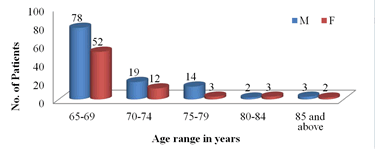
Figure 1: Gender wise age distribution of patients
Table 2: Number of drugs prescribed per patients
| No. of drugs prescribed | No. of patients | Percentage (%) |
|---|---|---|
| >8 | 68 | 36.1 |
| 8 | 35 | 18.6 |
| <8 | 85 | 45.2 |
| Total | 188 | 100 |
Distribution based on no. of drugs prescribed to patients
The mean of the drugs prescribed for the study population was found to be 8 ± 2.4. Among 188 patients, 68 (36.1%) were prescribed with more than 8 drugs, 35 (18.6%) were prescribed with 8 drugs, 85 (45.2%) were prescribed with less than 8 drugs (Table 2), (Figure 2).
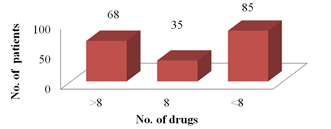
Figure 2: No. of drugs prescribed per patients
Distribution of comorbidities among patients
Among 188 patients, 65 (34.5%) patients were with hypertension, 70 (37.2%) had Diabetes mellitus, 5 (2.65%) patients had asthma, 9 (4.78%) patients had Tuberculosis, 62 (32.9%) were found to have other co-morbidities and 73 (38.8%) patients were presented with no co-morbidities (Table 3), (Figure 3).
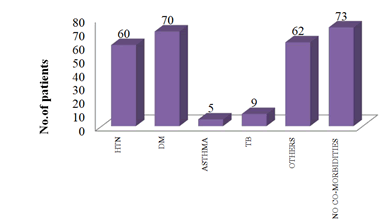
Figure 3: Distribution of diseases in patients
Table 3: Co-morbidities present in the sample population
| Co-morbidities | No. of patients (n=188) | Percentage (%) |
|---|---|---|
| Hypertension | 65 | 34.5 |
| Diabetes mellitus | 70 | 37.2 |
| Asthma | 5 | 2.65 |
| Tuberculosis | 9 | 4.7 |
| Others | 62 | 32.9 |
| No co-morbidities | 73 | 38.8 |
Distribution of various classes of drugs among patients
STOPP and Beer’s criteria were used to classify the medicines prescribed to the research population. 40 patients received prescriptions for drugs that act on the central nervous system; 155 patients received prescriptions for drugs that act on the gastrointestinal system; 90 patients received prescriptions for drugs that act on the musculoskeletal system; and 70 patients received prescriptions for drugs that act on the respiratory system. 11 individuals received prescriptions for urogenital systemacting medications, 62 received endocrine medication, 89 received antibiotics, 83 received vitamins and minerals, and 36 received prescriptions for medications from other classes (Table 4), (Figure 4).
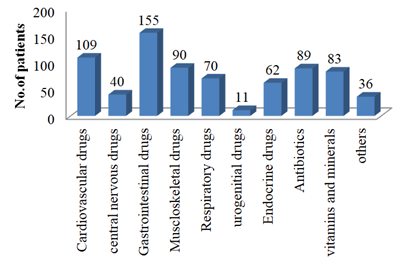
Figure 4: Distribution of various classes of drugs among patients
Table 4: Class of drugs prescribed among study population
| Drugs prescribed | No. of patients |
|---|---|
| Cardiovascular drugs | 109 |
| Central nervous drugs | 40 |
| Gastrointestinal drugs | 155 |
| Musculoskeletal drugs | 90 |
| Respiratory drugs | 70 |
| Urogenital drugs | 11 |
| Endocrine drugs | 62 |
| Antibiotics | 89 |
| Vitamins and minerals | 83 |
| Others | 36 |
Prescription pattern of various cardiovascular drugs
Table 5 and Figure 5 show Beers and STOPPcategorized cardiovascular medications prescribed to study participants. 109 (57.9%) of 188 patients received cardiovascular medications. Amlodipine was used 19 times in the study population, 10.1% of the total. Enalapril and atorvastatin, at 13 and 12, respectively, account for 6.9% and 6.4% of medication consumption. The table’s least-used medications have a frequency of 1, representing 0.5% of drug usage. Acenocoumarol, Atenolol, Carvedilol, Clopidogrel+Atorvastatin, Isosorbidedinitrite, Metoprolol, Minipress, Nicardipine, Nifidipine, Rosuvastatin, Telmisartan+Hydrochlorthiazide, Warfarin, and Verapamil. From 1.1% to 5.9% of drug use, the remaining substances vary.
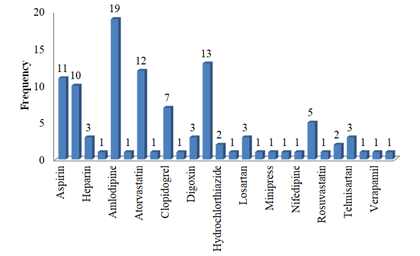
Figure 5: Prescription of cardiovascular drugs among patients
Table 5: Prescription of cardiovascular drugs among study population
| Drugs | Frequency (N=188) | Percentage (%) | Drugs | Frequency (N=188) | Percentage (%) |
|---|---|---|---|---|---|
| Aspirin | 11 | 5.9 | Hydrochlorthiazide | 2 | 1.1 |
| Furosemide | 10 | 5 | Isosorbidedinitrite | 1 | 0.5 |
| Heparin | 3 | 1.6 | Losartan | 3 | 1.6 |
| Acenocoumarol | 1 | 0.5 | Metoprolol | 1 | 0.5 |
| Amlodipine | 19 | 10.1 | Minipress | 1 | 0.5 |
| Atenolol | 1 | 0.5 | Nicardipine | 1 | 0.5 |
| Atorvastatin | 12 | 6.4 | Nifidipine | 1 | 0.5 |
| Carvedilol | 1 | 0.5 | Propranolol | 5 | 2.7 |
| Clopidogrel | 7 | 3.7 | Rosuvastatin | 1 | 0.5 |
| Clopidogrel+Atorvastatin | 1 | 0.5 | Spironolactone | 2 | 1.1 |
| Digoxin | 3 | 1.6 | Telmisartan | 3 | 1.6 |
| Enalapril | 13 | 6.9 | Telmisartan+Hydrochlorthiazide | 1 | 0.5 |
| Warfarin | 1 | 0.5 | Verapamil | 1 | 0.5 |
Prescription pattern of various drugs acting on nervous system
Table 6 and Figure 6 show BEER’s and STOPP-classified central nervous system medicines prescribed to the study population. 40 (21.2%) of 188 patients received central nervous system medicines. With a frequency of 6, Dopamine is used most frequently in the study population, accounting for 3.2% of drug use. Alprazolam and Amitriptyline follow with a frequency of 4 and 2.1% of drug usage, respectively. The table’s least-used medications have a frequency of 1, representing 0.5% of drug usage. Diethyl carbamazepine, amisulpride, gabapentin, levodopa, pregabalin, sodium valproate, and zolpidem.
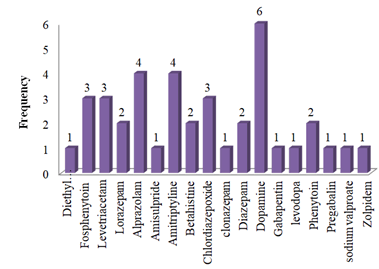
Figure 6: Prescription of neuroprotective drugs among patients
Table 6: Central nervous system drugs prescribed for the study population
| Drugs | Frequency (n=188) | Percentage (%) |
|---|---|---|
| Diethyl carbamazepine | 1 | 0.5 |
| Fosphenytoin | 3 | 1.6 |
| Levetiracetam | 3 | 1.6 |
| Lorazepam | 2 | 1.1 |
| Alprazolam | 4 | 2.1 |
| Amisulpride | 1 | 0.5 |
| Amitriptyline | 4 | 2.1 |
| Betahistine | 2 | 1.1 |
| Chlordiazepoxide | 3 | 1.6 |
| Clonazepam | 2 | 1.1 |
| Diazepam | 2 | 1.1 |
| Dopamine | 6 | 3.2 |
| Gabapentin | 1 | 0.5 |
| Levodopa | 1 | 0.5 |
| Phenytoin | 2 | 1.1 |
| Pregabalin | 1 | 0.5 |
| Sodium valproate | 1 | 0.5 |
| Zolpidem | 1 | 0.5 |
Prescription pattern of gastrointestinal drugs
Based on Beer’s and STOPP criteria, drugs used in the gastrointestinal system in the study population were classified. 155 (82.4%) of the 188 patients received various medications that act on the gastrointestinal tract. Ranitidine is the drug that is most commonly used in the study population, with a frequency of 87, or 46.2% of all drug usage. This implies that roughly 50% of the study population had received a ranitidine prescription. With a frequency of 36, or 19.1% of all prescriptions, pantoprazole is the second most often prescribed medication. Ondansetron is 3rd in terms of how frequently it is prescribed, with a frequency of 15, or 7.9% of all prescriptions. The least frequently used medications in the table are those with a frequency of 1, or 0.5% of all drug usage. Buscopan, lactifibre powder, sucralfate, bisacodyl, and esomeprazole are some of the medications on this list (Table 7), (Figure 7).
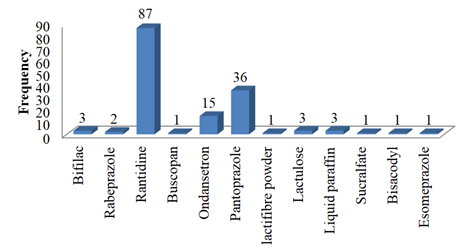
Figure 7: Prescription of neuroprotective drugs among patients
Table 7: Gastrointestinal drugs prescribed for the study population
| Drugs | Frequency (n=188) | Percentage (%) |
|---|---|---|
| Bifilac | 3 | 1.6 |
| Rabeprazole | 2 | 1.1 |
| Ranitidine | 87 | 46.2 |
| Buscopan | 1 | 0.5 |
| Ondansetron | 15 | 7.9 |
| Pantoprazole | 36 | 19.1 |
| Lactifibre powder | 1 | 0.5 |
| Lactulose | 3 | 1.6 |
| Liquid paraffin | 3 | 1.6 |
| Sucralfate | 1 | 0.5 |
| Bisacodyl | 1 | 0.5 |
| Esomeprazole | 1 | 0.5 |
Prescription pattern of gastrointestinal drugs
Table 8 and Figure 8 depicts the musculoskeletal drugs prescribed for the study population categorised based on Beer’s and STOPP criteria. Of 188 patients, 90 (47.8%) patients received various drugs acting on musculoskeletal system and paracetamol was found to be prescribed for 52 (27.6%) patients.
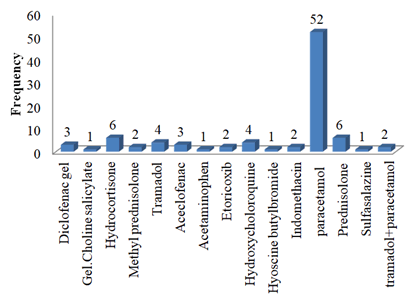
Figure 8: Prescription of gastrointestinal drugs among patients
Table 8: Musculoskeletal drugs prescribed for the study population
| Drugs | Frequency (n=188) | Percentage (%) |
|---|---|---|
| Diclofenac gel | 3 | 1.6 |
| Choline salicylate | 1 | 0.5 |
| Hydrocortisone | 6 | 3.2 |
| Methyl prednisolone | 2 | 1.1 |
| Tramadol | 4 | 2.1 |
| Aceclofenac | 3 | 1.6 |
| Acetaminophen | 1 | 0.5 |
| Etoricoxib | 2 | 1.1 |
| Hydroxychloroquine | 4 | 2.1 |
| Hyoscinebutylbromide | 1 | 0.5 |
| Indomethacin | 2 | 1.1 |
| Paracetamol | 52 | 27.6 |
| Prednisolone | 6 | 3.2 |
| Sulfasalazine | 1 | 0.5 |
| Tramadol+paracetmol | 2 | 1.1 |
Prescription pattern of respiratory drugs
The study population’s medications that affect the respiratory system are shown in Table 9 and Figure 9 and are categorised using Beer’s and STOPP criteria. Of the 188 patients, 21 (11.1%) had salbutamol prescribed to them, and 70 (37.2%) received other medications that affected the respiratory system. Salbutamol is the medicine that is most commonly used in the study population, with a frequency of 21, or 11.1% of all respiratory drugs used. Salbutamol is the most frequently prescribed respiratory medication for this population, according to this data. With 13 prescriptions each, budesonide and ipratropium bromide account for 6.9% of all prescriptions for respiratory pharmaceuticals. These two medications are used the second most frequently overall. The least used medications in the table have a frequency of 1, which equates to 0.5% of all respiratory medication consumption. These medicines include theophylline, oxymetazoline HCL drops, fexofenadine, and levocetrazine.
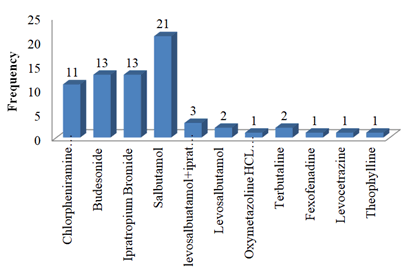
Figure 9: Prescription of respiratory drugs among patients
Table 9: Respiratory drugs prescribed for the study population
| Drugs | Frequency (n=188) | Percentage (%) |
|---|---|---|
| Chlorpheniramine maleate | 11 | 5.8 |
| Budesonide | 13 | 6.9 |
| Ipratropium bromide | 13 | 6.9 |
| Salbutamol | 21 | 11.1 |
| Levosalbutamol+Ipratropium | 3 | 1.6 |
| Levosalbutamol | 2 | 1.1 |
| Oxymetazoline HCL drops | 1 | 0.5 |
| Terbutaline | 2 | 1.1 |
| Fexofenadine | 1 | 0.5 |
| Levocetrazine | 1 | 0.5 |
| Theophylline | 1 | 0.5 |
Prescription pattern of genitourinary drugs
Table 10 and Figure 10 depicts the drugs acting on urogenital system prescribed for the study population categorised based on Beer’s and STOPP criteria. Of 188 patients, 11 (5.85%) patients received various drugs acting on urogenital system and Tamsulosin was found to be prescribed for 6 (3.1%) patients.
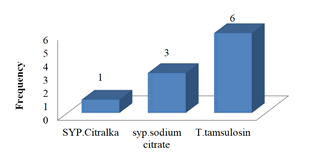
Figure 10: Prescription of genitourinary drugs among patients
Table 10: Urogenital drugs prescribed for the study population
| Drugs | Frequency (n=188) | Percentage (%) |
|---|---|---|
| Citralka | 1 | 0.5 |
| Sodium citrate | 3 | 1.6 |
| Tamsulosin | 6 | 3.1 |
Prescription pattern of endocrine drugs
Table 11 and Figure 11 depict the endocrine drugs prescribed for the study population categorised based on Beers and STOPP criteria. Of 188 patients, 62 (32.9%) patients received various drugs acting on endocrine system and Metformin was found to be prescribed for 29 (15.4%) patients.
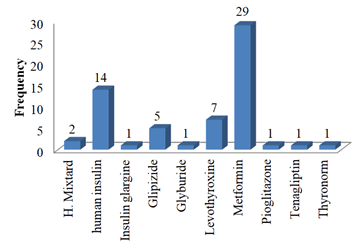
Figure 11: Prescription of endocrine drugs among patients
Table 11: Endocrine drugs prescribed for the study population
| Drugs | Frequency (n=188) | Percentage (%) |
|---|---|---|
| Human mixtard | 2 | 1.1 |
| Human insulin | 14 | 7.4 |
| Insulin glargine | 1 | 0.5 |
| Glipizide | 5 | 2.7 |
| Glyburide | 1 | 0.5 |
| Levothyroxine | 7 | 3.7 |
| Metformin | 29 | 15.4 |
| Pioglitazone | 1 | 0.5 |
| Tenagliptin | 1 | 0.5 |
| Thyronorm | 1 | 0.5 |
Prescription pattern of antibiotic drugs
Table 12 and Figure 12 show Beers and STOPPcategorized antibiotics prescribed to the study population. 89 individuals (47.3%) received antibiotics. The study population used cefotaxim 26 times, 13.8% of the overall antibiotic medication utilisation. Cefotaxim is the most prescribed antibiotic for this group. Levofloxacin, the second most prescribed antibiotic, accounts for 4.2% of antibiotic use. The least-used medications have a frequency of 1, representing 0.5% of antibiotics drug usage includes fusidic acid, imipenem, penicillin, ciprofloxacin plus tinidazole, clarithromycin, clindamycin, and norfloxacin.
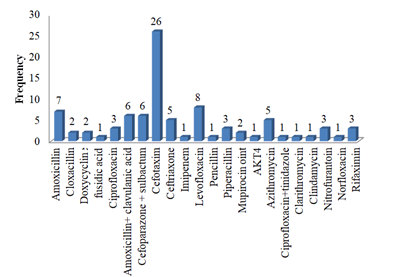
Figure 12: Prescription of respiratory drugs among the study population
Table 12: Antibiotics prescribed for the study population
| Drugs | Frequency (n=188) | Percentage (%) |
|---|---|---|
| Amoxicillin | 7 | 3.7 |
| Cloxacillin | 2 | 1.1 |
| Doxycycline | 2 | 1.1 |
| Fusidic acid | 1 | 0.5 |
| Ciprofloxacin | 3 | 1.6 |
| Amoxicillin+Clavulanic acid | 6 | 3.1 |
| Azithromycin | 4 | 2.1 |
| Cefoparazone+sulbactam | 6 | 3.1 |
| Cefotaxim | 26 | 13.8 |
| Ceftriaxone | 5 | 2.6 |
| Imipenem | 1 | 0.5 |
| Levofloxacin | 8 | 4.2 |
| Penicillin | 1 | 0.5 |
| Piperacillin | 3 | 1.6 |
| Mupirocinoint | 2 | 1.1 |
| AKT4 | 2 | 1.1 |
| Ciprofloxacin+Tinidazole | 1 | 0.5 |
| Clarithromycin | 1 | 0.5 |
| Clindamycin | 1 | 0.5 |
| Nitrofurantoin | 3 | 1.6 |
| Norfloxacin | 1 | 0.5 |
| Rifaximin | 3 | 1.6 |
Prescription pattern of supplemental drugs
Table 13 and Figure 13 depicts the vitamins and minerals prescribed for the study population categorised based on BEER’s and STOPP criteria. Of 188 patients, 83 (44.1%) patients received various vitamins and minerals and B-complex was found to be prescribed for 26 (13.8%) patients.
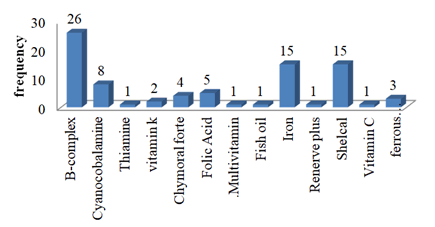
Figure 13: Vitamins and minerals prescribed for the study population
Table 13: Vitamins and minerals prescribed for the study population
| Drugs | Frequency (N=188) | Percentage (%) |
|---|---|---|
| B-Complex | 26 | 13.8 |
| Cynacobalamine | 8 | 4.25 |
| Thiamine | 1 | 0.5 |
| VitaminK | 2 | 1.1 |
| Chymoral forte | 4 | 2.1 |
| Folic acid | 1 | 0.5 |
| Multivitamin | 1 | 0.5 |
| Renerve plus | 1 | 0.5 |
| Shelcal | 15 | 7.9 |
| Vitamin c | 1 | 0.5 |
| Iron | 15 | 7.9 |
| Folic acid | 4 | 2.1 |
| Ferrous fumerate+folic acid | 3 | 1.6 |
| Omeaga-3 fattyacids | 1 | 0.5 |
Prescription pattern of other class of drugs
Table 14 and Figure 14 depicts the other class of drugs prescribed for the study population categorised based on Beers and STOPP criteria. Of 188 patients, 36 (19.1%) patients received various other class of drugs and Metronidazole was found to be prescribed for 6 (3.1%) patients.
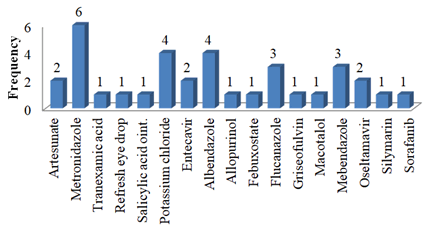
Figure 14: Other class of drugs prescribed for the study population
Table 14: Other class of drugs prescribed for the study population
| Drugs | Frequency (N=188) | Percentage (%) |
|---|---|---|
| Artesunate | 2 | 1.1 |
| Metronidazole | 6 | 3.1 |
| Tranexamic acid | 1 | 0.5 |
| Refresh eye drops | 1 | 0.5 |
| Salicylic acid ointment | 1 | 0.5 |
| potassium chloride | 4 | 2.1 |
| Entecavir | 2 | 1.1 |
| Albendazole | 4 | 2.1 |
| Allopurinol | 1 | 0.5 |
| Febuxostat | 1 | 0.5 |
| Flucanazole | 3 | 1.6 |
| Griseofulvin | 1 | 0.5 |
| Macotalol | 1 | 0.5 |
| Mebendazole | 3 | 1.6 |
| Oseltamivir | 2 | 1.1 |
| Silymarin | 1 | 0.5 |
| Sorafanib | 1 | 0.5 |
Prevalence of PIM according to BEER’s and STOPP’s criteria
According to the standards of 2015 BEER’s criteria, Table 15 and Figure 15 depicts the 18.6% of the sample population used PIMs. Chlorpheniramine (8% of the drug population) was most common. Amitriptyline (3.1%), levetiracetam (1.1%), trihexphenydil (0.5%), alprazolam (1.6%), chlordiazepoxide (1.6%), clonazepam (1.6%), and diazepam (1.1%) are some of the other potentially harmful medications. In accordance with STOPP guidelines, 9.4% of the study population used PIM. Diltiazem (2.1%) and alprazolam (2.1%) were the medicines that were used the most frequently. The other PIM consisted of glimepiride (2.1%), chlordiazepoxide (1.1%), clonazepam (1.6%), losartan (0.5%), aspirin (0.5%), clobazam (0.5%), and warfarin (0.5%). Figure 16 and Figure 17 indicates, data of potentially inappropriate drugs according to STOPP criteria; comparison of BEER’s and STOPP’s criteria respectively.
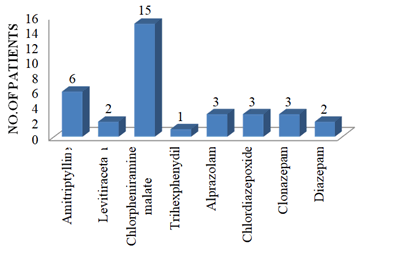
Figure 15: Potentially inappropriate drugs according to BEERâ??s criteria
Table 15: Potentially inappropriate drugs according to BEERâ??s and STOPPâ??s criteria
| BEER’s Criteria | STOPP Criteria | ||||
|---|---|---|---|---|---|
| Drugs | No. of patients (n=188) | Percentage (%) | Drugs | No. of patients (n=188) | Percentage (%) |
| Amitriptyline | 6 | 3.1 | Diltiazem | 4 | 2.1 |
| Levetiracetam | 2 | 1.1 | Glimepiride | 1 | 0.5 |
| Chlorpheniramine | 15 | 8 | Alprazolam | 4 | 2.1 |
| Trihexphenydil | 1 | 0.5 | Chlordiazepam | 2 | 1.1 |
| Alprazolam | 3 | 1.6 | Clonazepam | 3 | 1.6 |
| Chlordiazepoxide | 3 | 1.6 | Losartan | 1 | 0.5 |
| Clonazepam | 3 | 1.6 | Aspirin | 1 | 0.5 |
| Diazepam | 2 | 1.1 | clobazam | 1 | 0.5 |
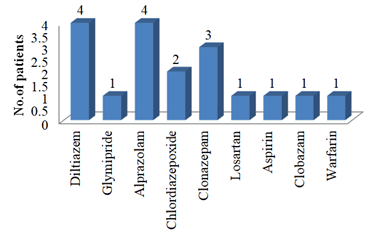
Figure 16: Potentially inappropriate drugs according to STOPP criteria

Figure 17: Comparison of BEERâ??s and STOPPâ??s criteria
Discussion
The November 2020 to April 2021 prospective observational study included 188 individuals. Most individuals were 65 years-69 years old and averaged 68.7 years ± 4.7 years. The increased life expectancy in affluent countries compared to developing ones like India may explain this. Due to their diminished functional capacity and higher vulnerability to chronic diseases, geriatrics is increasingly polypharmacy. 37.2% of patients were diabetic, a typical morbidity trend in India. 22.7% of diabetics also had hypertension, increasing their risk of cardiovascular disease hospitalisation. The study found 45.2% of patients received less than 8 medications. Polypharmacy and age are major risk factors for senior patients’ IP [19]. Two independent investigations found a significant proportion of IP among critically unwell elderly hospitalised patients in Ireland [20,21]. BEER’s criterion yielded substantially more potentially improper prescriptions (PIPs) than STOPP’s. This is similar with earlier studies demonstrating that 32% of acutely unwell elderly individuals regularly received at least one potentially inappropriate medication (PIM) before hospitalisation [22]. Psychotropic drugs caused falls and fractures, and NSAIDs caused upper gastrointestinal haemorrhage [23]. 82.4% of 188 patients received gastrointestinal medications. Alprazolam, chlordiazepoxide, and clonazepam were commonly recommended BEER and STOPP-inappropriate medications. Despite evidence of harm to older people, psychotropic drug use is widespread and problematic [24].
Some of Beers’ criteria medications may still benefit older patients. Low-dose amitriptyline, doxazosin, and amiodarone may treat various pain syndromes, resistant hypertension, and recurrent ventricular tachycardia or paroxysmal atrial fibrillation, respectively. Beers’ criteria should include the newest evidence and possible benefits of particular drugs for elderly individuals [25]. Increased gastric pH, decreased surface intestinal absorption, and lower esophageal sphincter pressure and peristalsis can impact drug absorption in older persons [26]. Ketoconazole absorption may be reduced by hypochlorhydria [27]. Drug distribution can be affected by age-related body composition changes such decreased water content and increased adipose mass [28]. Subcutaneous and intramuscular medication absorption can be affected by decreased tissue blood perfusion and muscle mass [29]. Hepatic blood flow decreases biotransformation, lowering first-pass metabolism and increasing medication bioavailability in aged people. Some medications may last longer if cytochrome P450 enzyme activity decreases. Diazepam has a half-life of 24 h in younger patients and 90 h in elderly ones [30]. Benzodiazepines, morphine, and amiodarone are lipid-soluble, therefore their volume of distribution increases with age. Diazepam, thiopental, and lidocaine have increased distribution and elimination halflife. Thus, post-treatment side effects may last longer [31]. Due to decreased first-pass metabolism, pro-drugs such the angiotensin-converting enzyme inhibitors enalapril and perindopril may have lower systemic concentrations of the active medication [32].
Between the age 30 and 80, the kidney’s size decreases by 20%-30%, reducing glomerular filtration rates and affecting drug clearance of water-soluble antibiotics, diuretics, digoxin, water-soluble beta-blockers, lithium, nonsteroidal anti-inflammatory drugs, and newer anticoagulants like dabigatran and rivaroxaban [33]. Polypharmacy greatly affects IP. Patients with more than five medications were 3 times more likely to receive an inappropriate prescription. Unnecessary pharmaceuticals increase an older person’s drug regimen’s number, complexity, cost, and risk of injury. Doctors prescribe incorrect medications for many reasons [34]. For better older patient treatment, reduced morbidity, and optimal health resource use, practitioners need greater pharmacological education, especially about drug side effects. Lack of patient follow-up prevented this investigation from identifying adverse medication effects. This study used screening instruments developed in Europe and America, therefore its applicability in developing nations like India may be limited due to differences in clinical practises and patient characteristics.
Conclusion
Beers criteria detected 18% and STOPP criteria 9.6% of Potentially Inappropriate Pharmaceuticals (PIMs) in this investigation. However, these PIMs were not clinically significant, requiring discontinuation of the inappropriate medicine, and participants did not experience adverse reactions. These criteria approved 80%-90% of prescriptions. Prescription screening techniques may minimise medication-related adverse events, hospitalisations, and expenses. These screening tools should be tested for their effect on adverse drug events. The study emphasises geriatric pharmacotherapy training for healthcare practitioners. These tools must be widely used in geriatric prescribing. These screening tools are useful, they should only serve to enhance, rather than replace, clinical judgment.
Acknowledgement
None.
Conflict Of Interest
Authors have no conflict of interest to declare.
References
- W.C. Koff, M.A. Williams, Covid-19 and immunity in aging populations-a new research agenda, N Engl J Med, 383(2020):804.
- A.C. Drenth-van Maanen, I. Wilting, P.A.F. Jansen, Prescribing medicines to older people-how to consider the impact of ageing on human organ and body functions, Br J Clin Pharmacol, 86(2020):1921.
- D.E. Bloom, T.V. Sekher, J. Lee, Longitudinal Aging Study in India (LASI): New data resources for addressing aging in India, Nat Aging, 1(2021):1070.
- K.K. Santhosh, T. Isabella, B.A. Kumar, Prevalence of potentially inappropriate medication use and drug utilization pattern in elderly patients: A prospective study from a tertiary care hospital, Int J Res Med Sci, 3(2015):2062.
- A.A. Mangoni, S.H. Jackson, Age-related changes in pharmacokinetics and pharmacodynamics: Basic principles and practical applications, Br J Clin Pharmacol, 57(2004):6.
- L.C. Sera, M.L. McPherson, Pharmacokinetics and pharmacodynamic changes associated with aging and implications for drug therapy. Clin Geriatr Med 28 (2012):273.
- M. Schwab, Encyclopedia of cancer, Berlin, Heidelberg: Springer, 2011.
- J. Hamano, Y. Tokuda, Primary care quality: Community health center and health maintenance organization, J Prim Care Amp Community Health, 5(2014):90.
- P. Supriya, P. Abinash, P. Snigdja, Determinants of potentially inappropriate medication on elderly"Â a hospital based cross-sectional study, J Clin Gerontol, 8(2017):93.
- R.J. Maggiore, C.P. Gross, A. Hurria, Polypharmacy in older adults with cancer. Oncologist, 15(2010):507.
- P.F. Gallagher, P.J. Barry, C. Ryan, Inappropriate prescribing in an acutely ill population of elderly patients as determined by beers' criteria. Age Ageing, 37(2008):96.
- C. Cahir, T. Fahey, M. Teeling, C. Teljeur, J. Feely, et al. Potentially inappropriate prescribing and cost outcomes for older people: A national population study, Br J Clin Pharmacol, 69(2010):543.
- Y. Bao, H. Shao, T.F. Bishop, Inappropriate medication in a national sample of US elderly patients receiving home health care. J Gen Intern Med, 27(2012):304.
- B.J. Basger, T.F. Chen, Moles, Inappropriate medication use and prescribing indicators in elderly Australians: Development of a prescribing indicators tool. Drugs Aging, 25(2008):777.
- Z.A. Marcum, J.T. Hanlon, Commentary on the new American Geriatric Society Beers criteria for potentially inappropriate medication use in older adults. Am J Geriatr Pharmacother, 10(2012):151.
- D. O'Mahony, P. Gallagher, S. Byrne, STOPP and START criteria: A new approach to detecting potentially inappropriate prescribing in old age, Eur Geriatr Med, 1(2010):45.
- C. Tannenbaum, P. Martin, R. Tamblyn, Reduction of inappropriate benzodiazepine prescriptions among older adults through direct patient education: The empower cluster randomized trial, JAMA Intern Med, 174(2014):890.
- S. Arslan, A.A. Atalay, Y. Gokce-Kutsal, Drug use in elderly, J Am Geriatr Soc, 50(2002):1163.
- Y.S. Karandikar, S.R. Chaudhari, N.P. Dalal, Prevalence of polypharmacy, hyperpolypharmacy and potentially inappropriate medication use in older adults in India: A systematic review and meta-analysis, J Clin Gerontol, 4(2013):109.
- G. Onder, F. Landi, M. Cesari, Inappropriate medication use among hospitalized older adults in Italy: Results from the Italian group of pharmacoepidemiology in the elderly Eur J Clin Pharmacol, 59(2003):157.
- S.S. Egger, A. Bachmann, N. Hubmann, R.G. Schlienger, Prevalence of potentially inappropriate medication use in elderly patients: Comparison between general medical and geriatric wards. Drugs Aging, 23(2006):823.
- D.M. Fick, J.W. Cooper, W.E. Wade, Updating the beers criteria for potentially inappropriate medication use in older adults: Results of a US consensus panel of experts: Archives of internal medicine Arch Intern Med, 163(2003):2716.
- I. Klarin, A. Wimo, J. Fastbom, The association of inappropriate drug use with hospitalisation and mortality: A population-based study of the very old, Drugs Aging, 22(2005):69.
- S.L. Gray, A.Z. La Croix, J.T. Hanlon, B. Penninx, Benzodiazepine use and physical disability in community-dwelling older adults, J Am Geriatr Soc, 54(2006):224.
- F. Paul, Gallagher, P.J. Barry, Inappropriate prescribing in an acutely ill population of elderly patients as determined by beers' criteria, Age Ageing, 37(2008):96.
- A.O. Baldoni, F.M.D. Chequer, E.R.A. Ferraz, D.P. Oliveira, Elderly and drugs: Risks and necessity of rational use. Braz J Pharm Sci, 46(2010):617.
- E. Reeve, M.D. Wiese, A.A. Mangoni, Alterations in drug disposition in older adults, Expert Opin Drug Metab Toxicol, 11(2015):491.
- R.M. Russell, Changes in gastrointestinal function attributed to aging. Am J Clin Nutr, 55(1992):1203.
- K. Turnheim, Drug dosage in the elderly, is it rational?, Drugs Aging, 13(1998):357.
- G. Amanda Rodrigues, M.V.T. Gubert de, M.C. Toffoli-Kadri, Potentially inappropriate medication use in institutionalized older adults according to the beers criteria, Braz J Pharm Sci, 50(2014):827.
- P.A. Jansen, J.R. Brouwers, Clinical pharmacology in old persons, Scientifica (Cairo), 723678.
- R.G.J. Westendorp, T.B.L. Kirkwood, The biology of ageing ageing in society, Sage, 2007.
- A.J. McLean, D.G. Le Couteur, Aging biology and geriatric clinical pharmacology, Pharmacol Rev, 56(2004):163.
- A. Spinewine, C. Swine, S.V. Dhillon, Appropriateness of use of medicines in elderly inpatients: Qualitative study. Br Med J, 331(2005):935.
Copyright: © 2023 Rachamsetty Kavya, et al. This is an open access article distributed under the terms of the Creative Commons Attribution License, which permits unrestricted use, distribution, and reproduction in any medium, provided the original work is properly cited.

